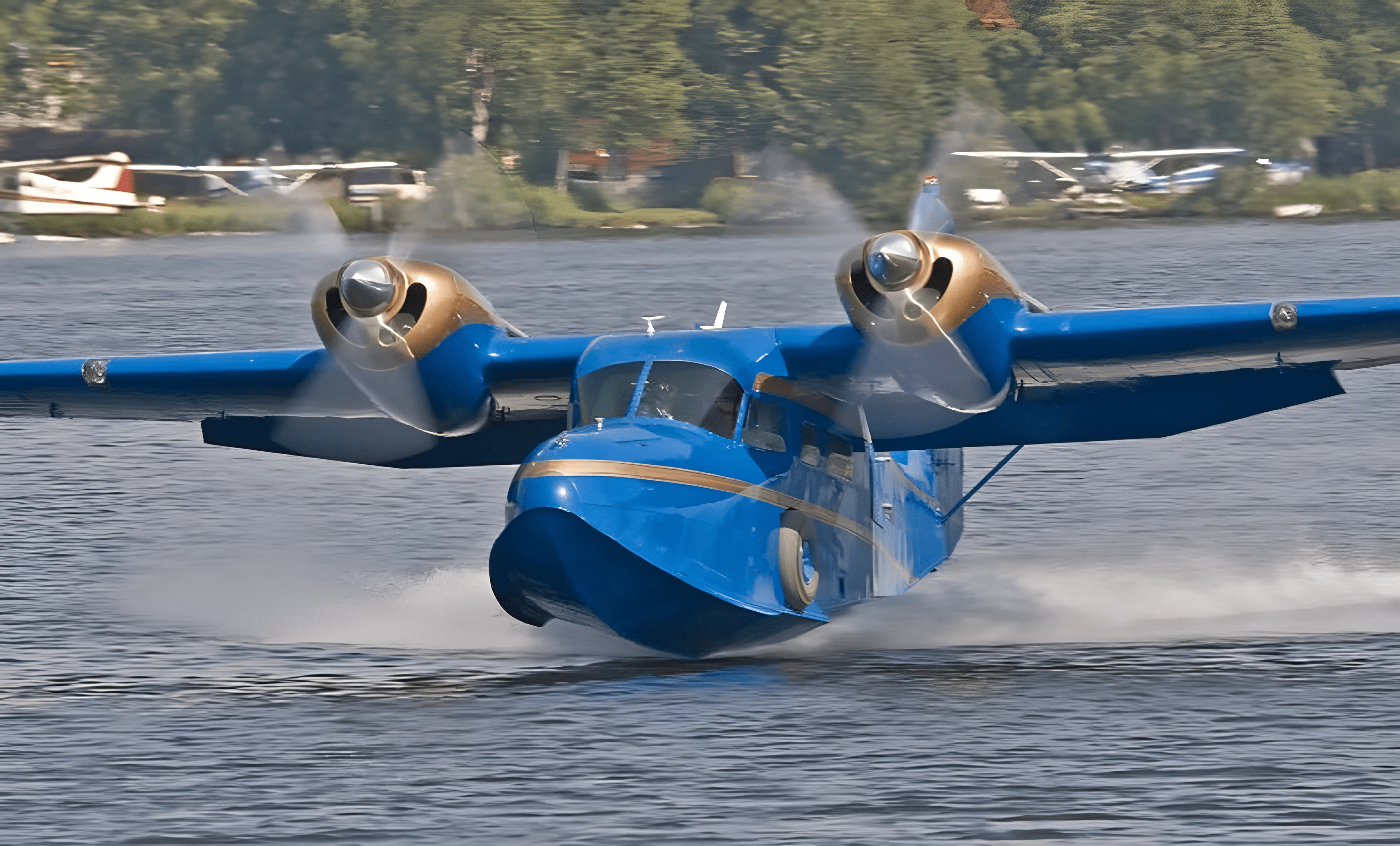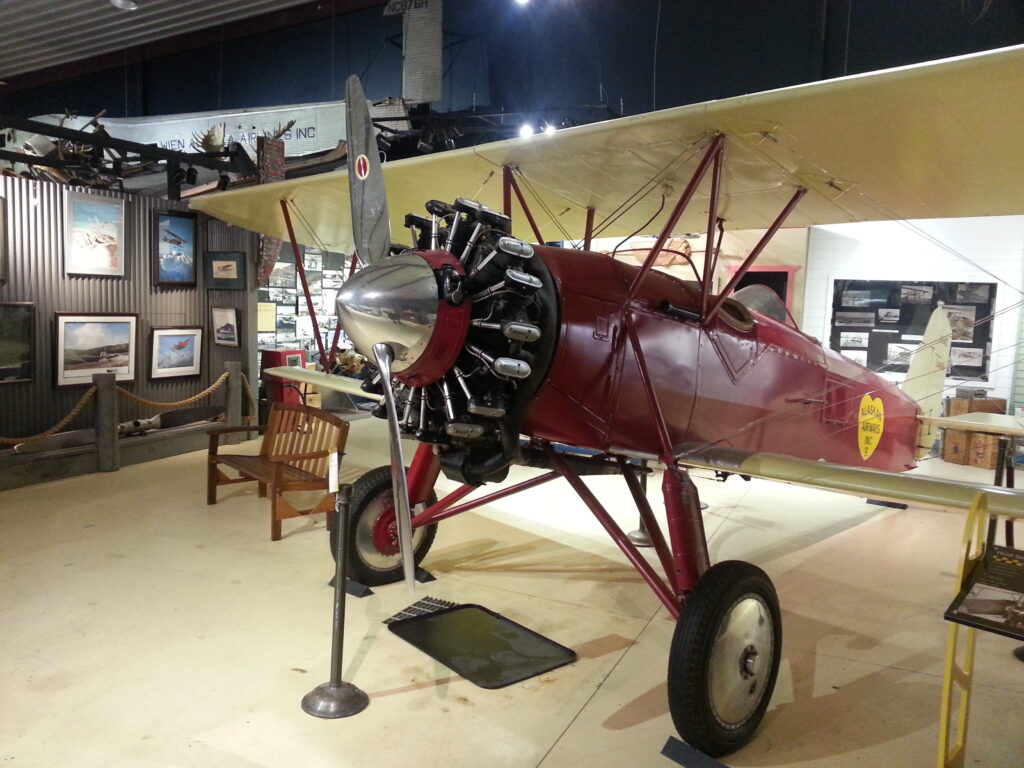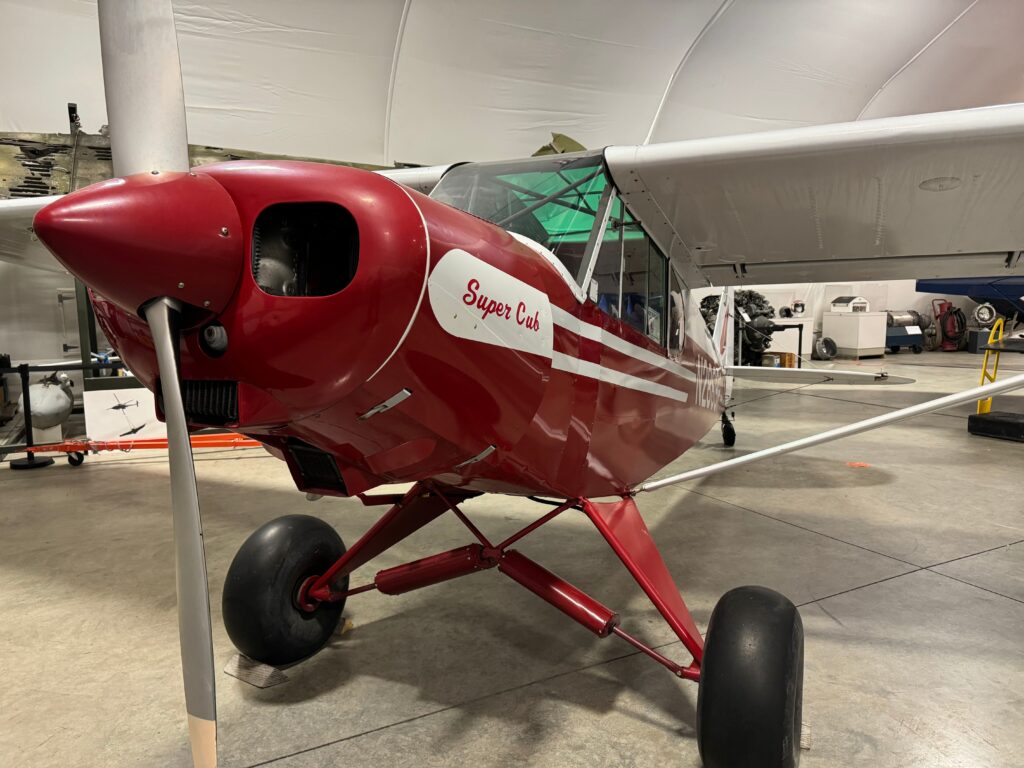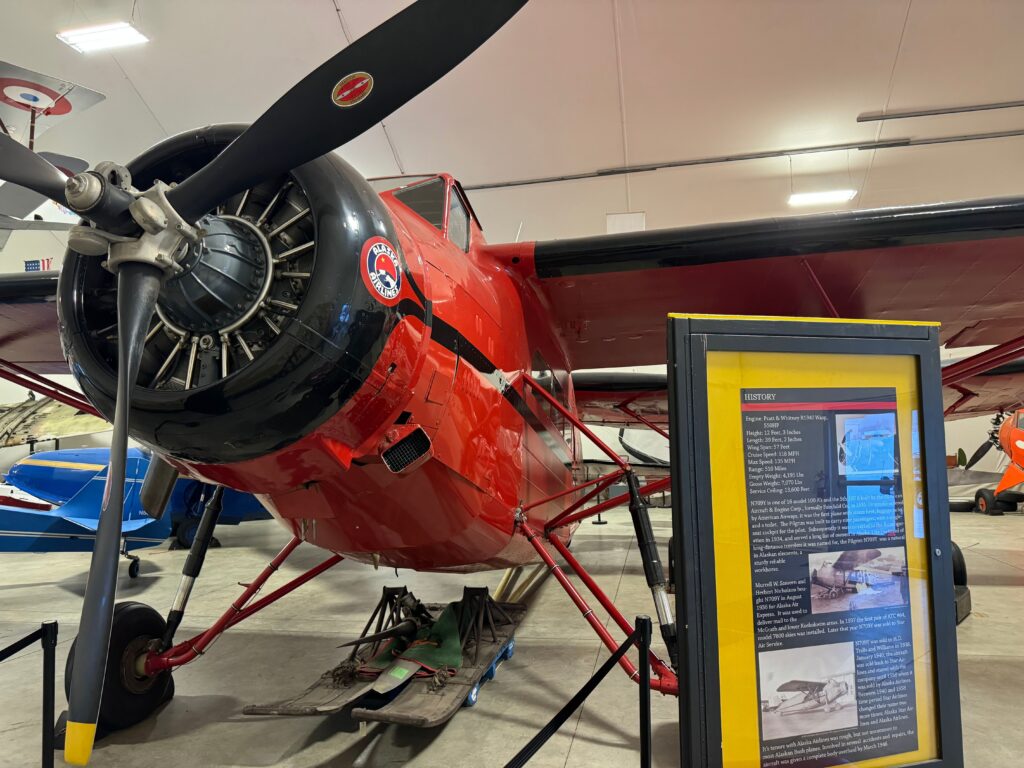Museum
Exhibits
Alaska Aviation Archives: Episode 1
Check out our latest Alaska Archives Video!

Flight Simulator
"Embark on an exhilarating journey through the skies with our Virtual Reality Flight Simulator exhibit! Strap into the cockpit and soar to new heights in a hyper-realistic flying experience. From heart-pounding aerobatics to breathtaking landscapes, our simulator brings the thrill of aviation to life. Whether you're an aviation enthusiast or a first-time flyer, this immersive adventure awaits you at our exhibits page – where the sky is no longer the limit!"

1943 Grumman G-44 “Super Widgeon”
The Widgeon is the smallest member of the Grumman family of amphibious aircraft, and was intended as the smaller, less expensive alternative to the Grumman Goose. This aircraft was originally planned for civilian service, and can hold up to 5 passengers. However, Grumman quickly switched to war production for World War II and produced over 250 planes in the following years. The history of N13122 before 1967 is unknown, other than it had been registered in Canada. Neither the Grumman Aircraft Company nor the U.S. Military had this aircraft’s serial numbers on file.

1947 Republic RC-3 Seabee
The Republic RC-3 Seabee is an all-metal amphibious sports aircraft designed by Percival Spencer and manufactured by the Republic Aircraft Corporation.

1928 Stearman C2B
The most “historic aircraft” in the collection, this Stearman C2B was built in 1928, and arrived in Alaska in 1929. It was flown by many of the so-called “eagles,” the early pioneers, including Noel Wien, Ben Eielson, Harold Gilliam, Joe Crosson, Bob Reeve, and Merle “Mudhole” Smith. In 1932 this plane conducted the first landing and rescue on Mt. McKinley. It was crashed in 1937, and subsequently recovered in the mid 1960s by Jack Wilson. NC5415 was restored to flying condition by Les and Janet Kares, who sold the aircraft to the Alaska Aviation Museum in 1991.

1955 Piper “Super Cub” PA-18-150
Manufactured in 1955, N2869P is an example of a long line of tandem seated Piper Cubs. Originally designed by William Taylor as the J2 in the early 1930s, it evolved into various models; J3, J4, J5, PA11, and finally PA18. There are more than 1,000 registered model PA18 aircraft in Alaska today, which attests to the popularity and longevity of the “Super Cub” design. “Super Cubs” are the principle mode of air transportation in rural Alaska, due to their exceptional short takeoff/landing abilities. These aircraft are popular with both commercial guides and independent pilots. N2869P was donated to the Alaska Aviation Museum by Floyd Carlson.

1944 WACO (model UIC)
Those who remember the aviation era starting in 1920 to 1942, "WACO" was at that time a magic word in aviation circles, and always showed progress even in the lean years of aviation.
Specs:
- Waco Model UIC 1933 (one of its first cabin models)
- Seated Four
- Continental R670 engine, 220 hp
- Gross Weight: Empty 1690 lbs; Seaplane 3250 lbs; Land 2800 lbs
- Max Speed: 136 mph - Cruising: 118 mph
- Landing: 38 mph
From the Alaska Transportation Museum TMA-76-6

1943 Pilgrim 100-B N709Y
One of a few surviving aircraft from the early days of aviation in the history of Alaska. It is a single-engine aircraft, built as a Fairchild 100 Pilgrim in 1932 by the American Airplane & Engine Corporation, of a type where only 10 were produced. This aircraft, and others like it, were used in the early days of Alaskan aviation to transport mail, people, and supplies, to all corners of the territory. At the time of its listing on the National Register of Historic Places in 1986, it was the last Pilgrim that was still flightworthy and was stationed in Dillingham Airport It was acquired in 2001 by the Alaska Aviation Heritage Museum, which moved it to its actual location and uses it as a flying exhibit.

1929 Keystone Loening Biplane
The K-84 "Commuter" was an amphibious aircraft or flying boat. Its engine was mounted between the wings and the lower wings equipped with pontoons. Powered by a 400 hp Jacobs engine, instead of the standard 300 hp Wright, this aircraft cruised at 90 mph. Seated Four. Crashed in 1946, partially restored. Donated by Jay Hammond. TMA 76-4

1924 Douglas World Cruiser “Seattle”
In 1924 the US Army sent four modified torpedo bombers, renamed Douglas World Cruisers, with the hope that at least one of them would complete the journey. They were named for American cities: Seattle, Chicago, Boston and New Orleans. The first airplane to drop out of the trek was the command ship, the Seattle, which crashed near Chignik Lake, Alaska. In the ten days it took the commander, Major Frederick Martin and his mechanic Alva Harvey, to hike out from the crash site, the rest of the expedition went on. The New Orleans and the Chicago successfully completed the trip. (The fully restored Boston hangs in the Smithsonian Air & Space Museum in downtown Washington DC.)
